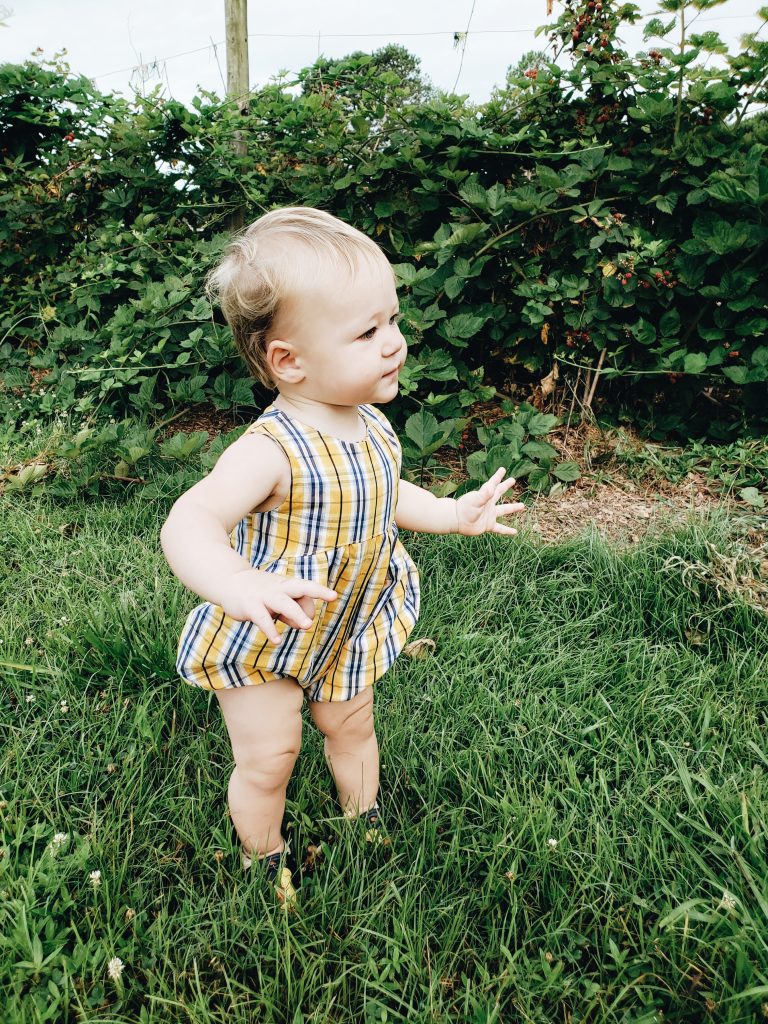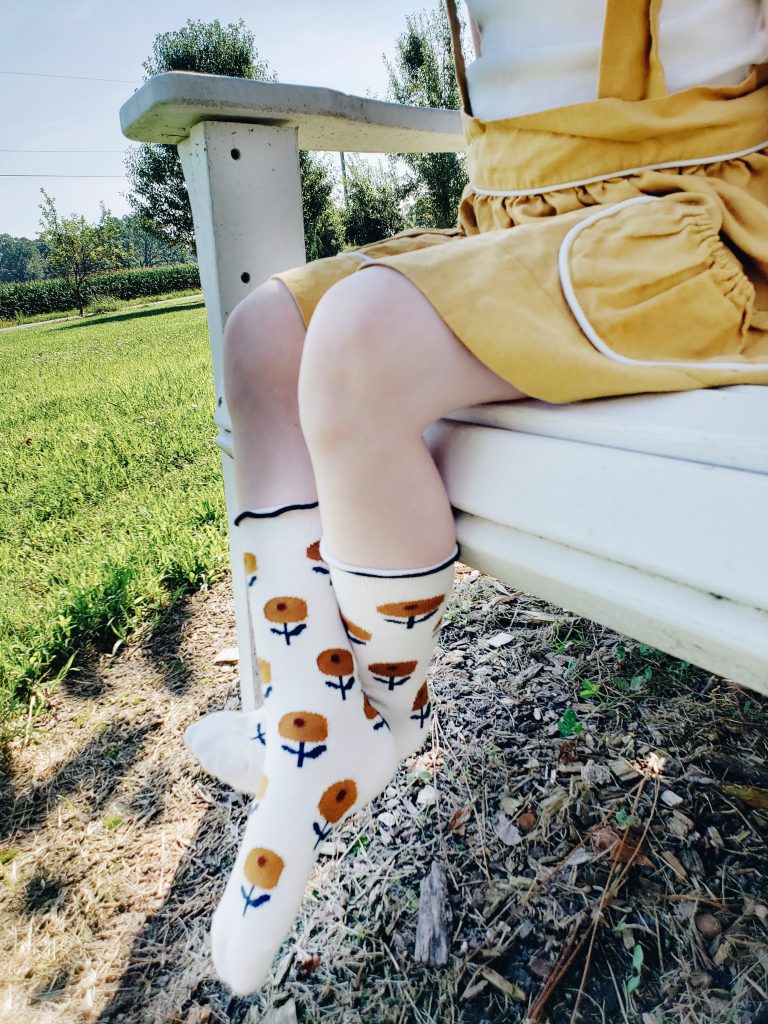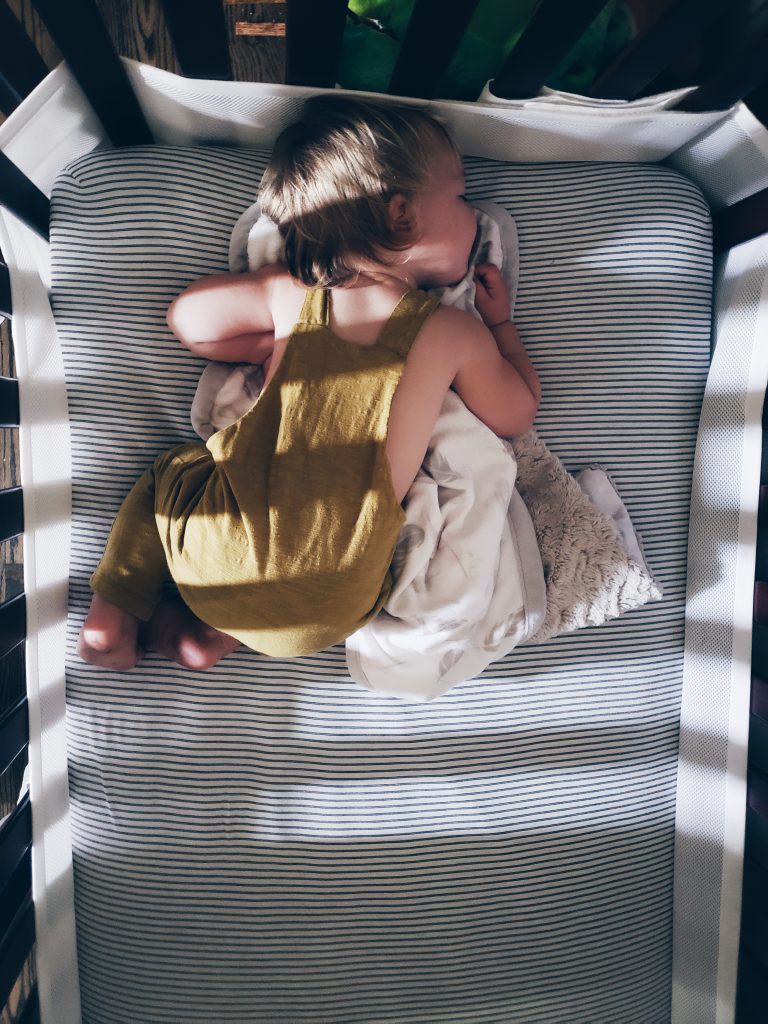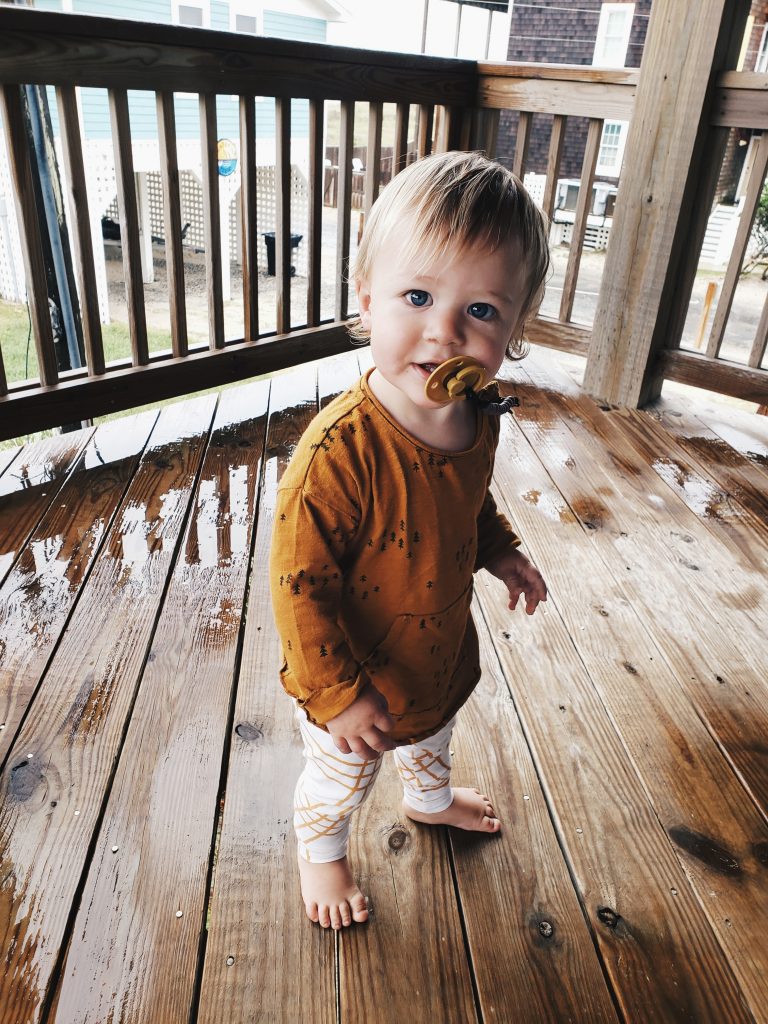Slow clothing is a topic much on my mind of late. I have, of course, known for some time that the garment industry has it’s problems. There are the obvious ones: big box stores, mass marketing, consumerism, trendy styles…it’s all about fast fashion. But there are also the hidden ones: the unbelievably low wages earned in developing countries by the seamstresses and garment workers who create the clothing, the factory working conditions, etc. etc. And of course, the environmental impacts of the garment industry: too many clothes end up in landfills, too much synthetic fiber doesn’t break down, too many factories emit pollution, too many chemicals are used in producing cotton, and the list goes on.
As a mom, a human being, and someone who believes that the welfare of others is paramount to my living out my life’s calling, neither the obvious nor the hidden costs of fast fashion settle well with me.
I have no desire to teach my daughter to buy, buy, buy. My children don’t “need” the latest and greatest of anything. We value quality of quantity; I prefer to support local economies, artisans, makers, and creators.
And I have to pause and think. Yes, that $5 shirt on clearance from my local fast fashion resource is a great deal. Yes, it would be good for my budget (assuming I need a new shirt). BUT.
If I am paying $5 for that shirt, how much does the garment worker earn? I mean, after you account for the factory costs, the transportation of the garment, the warehousing, the storefronts, the retail employees…really, how much was given to that seamstress?
Because here is something I know: that woman (or man) is just trying to feed their family, keep a roof over their head, provide health care and education to their children.
I cannot, in good conscience, support an industry I know is oppressing families in poverty, keeping them in poverty, for the gain of corporate revenue or the gain of my closet. That seamstress? She just wants to earn enough money to bring dinner home for her children instead of sending them to bed with empty stomachs yet again. Meanwhile, I complain that with my pantry full of food there is “nothing to eat” in my house.

Change is slow, and I acknowledge that with every fiber of my being. I can’t change the garment industry, I can barely change my own habits. But I can work on it.
So I started the journey of slow fashion, ethical fashion, sustainable fashion. They all mean slightly different things. I prioritize working conditions, fair wages, and fair trade practices, look for local makers and artists who are being rewarded for their talents and efforts, seek out companies who are dedicated to changing the way they do business to benefit the world we live in, and look for garments that are durable, well made, and will last many seasons. And, of course, for the good of my family, this all also has to be affordable.
No brand is perfect. Many meet one or two of the criteria, but not all. You can check out some of the larger brands for their ratings at Good On You to learn more about how they stack up in 3 areas: Planet, People, and Animals
I’ve found a few worth adding to my closet as I have need, so I thought I would put them here for anyone else who may be interested in changing habits to help change the world.

Another aspect of our slow clothing journey has been focusing on natural fabrics: organic cotton, hemp, bamboo, linen and wool specifically. I’ve been slowly and steadily building up our stash of these items. A pair of boiled wool mittens, a set of bamboo leggings, some sturdy organic cotton pajamas that will serve each of my kids as hand-me-downs. The fabrics breathe, they keep our temperatures regulated, they reduce the number of synthetics and chemicals that we put on our bodies. I’d encourage you to look into the fabric choices you make as you work through your own journey.

One very sustainable tip that just about anyone can follow is buying second-hand. Be it from a thrift story, upscale consignment shop, online outlet (a few posted above), or a BST group. By buying pre-loved clothing, you’re helping reduce waste that could end up in landfills, reuse items that are perfectly good and have lots of life left, reduce the energy required to make new garments, and so much more.
I try to still focus on buying slow clothing brands secondhand, but even fast fashion purchased secondhand (like those muddy weather clothes for toddlers!) are preferable to purchasing cheap fashion new from a retailer. Plus, when I buy slow fashion from other like-minded mamas, I know they are more likely to take their earnings and purchase more slow fashion for their families. It’s a cycle I’m happy to be a part of!
I am still on this journey of slowing. Slowing my life, slowing my food, slowing my fashion, etc. I would love to hear YOUR tips on slow clothing! Favorite brands? A maker making a difference? A creator doing something new? Share it below! Let’s join each other along this journey and share in each small step toward a more ethical, sustainable life.

I developed this list of my own research and experience. I am not being paid or perked to feature these brands. Full disclosure: I have at some point been provided free or discounted products from Jan & Jul for an honest review.
This site uses Akismet to reduce spam. Learn how your comment data is processed.

Copyright Holly Combs and Our Barefoot Homestead

